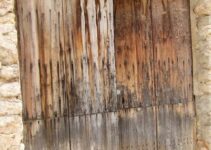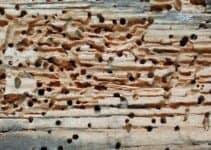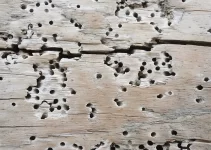Woodworms, though minute in size, play a considerable role in ecology, and their impact on our homes can be noticeably destructive.
These larvae, particularly known for their vulnerability when exposed to air, have intrigued homeowners, woodworkers, pest control enthusiasts, and entomologists alike.
But why does woodworm die when exposed to air? The truth is, woodworms don’t necessarily die when exposed to air, but they are vulnerable to changes in humidity and temperature. They thrive in moist, undisturbed environments, and a dry, open-air environment can cause them to dehydrate and eventually die.
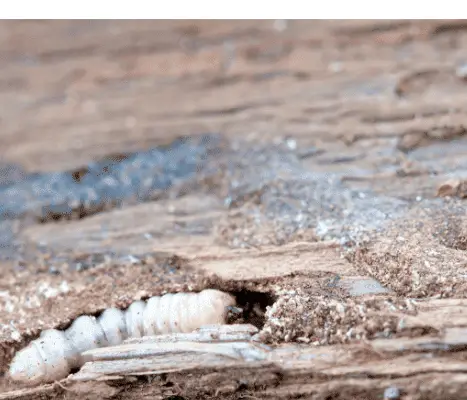
This article aims to unravel the life cycle of woodworms, their natural lifespan, and delve deeper into why these tiny creatures perish when they come into contact with air.
Understanding Woodworms: An Overview
Woodworms are, interestingly, not worms but the larvae of different species of wood boring beetles, such as the Common Furniture Beetle or the Deathwatch Beetle.
As their names suggest, they are notorious for their propensity to burrow into wooden furniture or structural timber, causing significant damage over time.
The life of a woodworm begins inside timber, feeding on the wood during a growth phase that can last anywhere from several months to multiple years, depending on the species.
During this time, they are continuously weakening the wood from the inside out, eventually maturing and transforming into beetles.
Once fully grown, they bore their way out of the timber to mate and lay eggs, commencing the cycle anew.
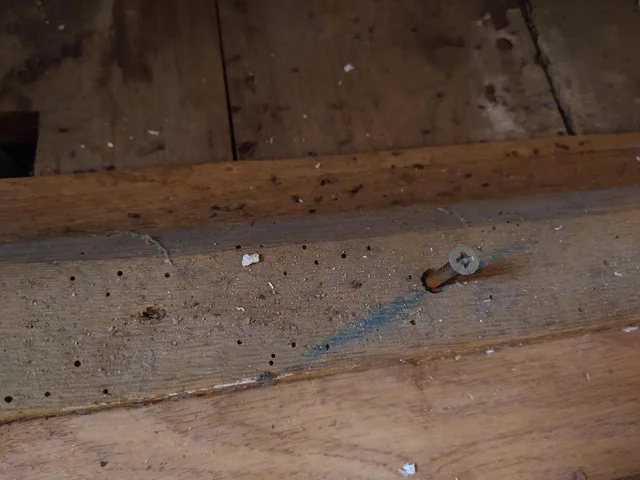
Their role in the ecosystem is primarily as decomposers, breaking down dead and decaying wood and returning essential nutrients back to the soil.
This function, although detrimental to our wooden structures, is vital for maintaining the balance of our ecosystems.
Does Woodworm Die Naturally?
All living organisms, including woodworms, have a natural lifespan that ultimately concludes in death. Factors contributing to their mortality can include disease, predation, or reaching the end of their life cycle.
In the realm of woodworms, the term ‘natural lifespan’ refers to the duration of the larval stage of the wood-boring beetles.
This stage, dependent on the species and environmental conditions, can last anywhere between two and five years.
Upon reaching maturity, the larva pupates, metamorphosing into a beetle. This transformation signals the end of the woodworm stage, but not the end of the insect’s life.
How Long Does it Take for Woodworm to Die?
The life cycle of a woodworm, from egg to mature beetle, is intrinsically tied to its survival. The lifespan of these creatures varies based on the species and surrounding environmental conditions.
However, exposure to unfavorable conditions can drastically shorten this lifespan.
Exposure to air, in particular, can be a death sentence for these moisture-loving creatures. Why does this seemingly harmless circumstance lead to the untimely death of woodworms? Let’s delve into the answer.
Why Does Woodworm Die When Exposed to Air?
Woodworms, much like other wood-boring insects, thrive in high-humidity environments. They exist within the damp interiors of timber, which provides the necessary moisture for survival.
When exposed to air, woodworms undergo rapid desiccation, a process that saps the essential moisture from their bodies, causing fatal dehydration.
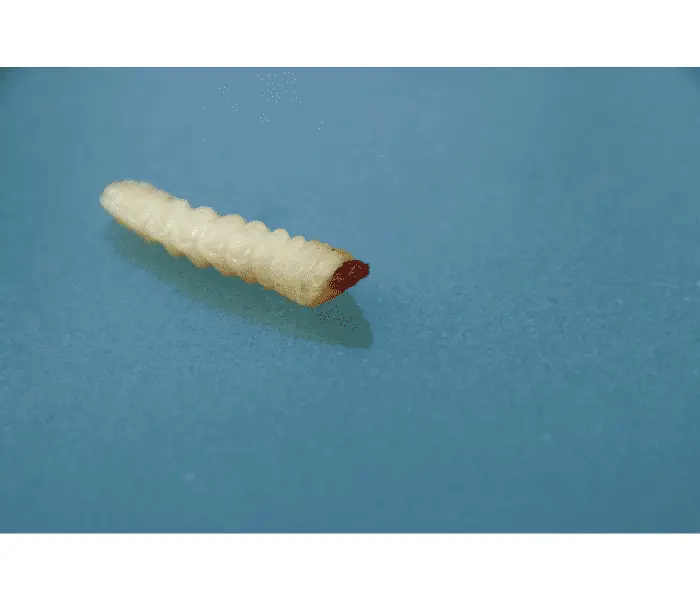
Additionally, the physical adaptations that make life inside wood possible for these insects render them virtually helpless in open air.
Their bodies, designed for navigating the narrow, moist burrows inside timber, are ill-suited for seeking out food or escaping predators in open, dry environments.
This vulnerability, while appearing disadvantageous, has evolved as a natural defense mechanism. It provides a level of protection against predators and allows these creatures to survive and proliferate in their unique, wood-centric niche.
Does Woodworm Survive Outside?
Theoretically, woodworms could exist outside of wood, but their survival would be highly unlikely.
The harsh conditions of the outside world, including susceptibility to desiccation, inability to move efficiently, and exposure to predators, make life outside timber unfavourable for these creatures.
Certain species of wood-boring beetles lay their eggs in outdoor deadwood, signifying a level of adaptability to external conditions.
However, once the larvae hatch, they burrow deep into the wood to avoid exposure to the air.
In conclusion, understanding the biology and behavior of woodworms is not just a fascinating delve into a lesser-known facet of nature; it is also crucial knowledge for those dealing with pest infestations.
This understanding allows us to better manage these pests, protect our homes, and appreciate the role that even such tiny creatures play in the vast tapestry of our ecosystems.
